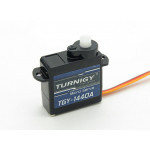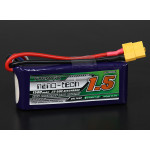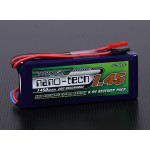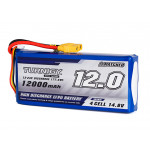
Written by Painless 360
I bought my first set of goggles back in February 2013 after deciding not to gamble my money on a set of pieces that may not have worked well together.
I decided on a set of Fat Shark Predator V2 goggles that came with the video transmitter and even a little basic camera designed to work straight out of the box. In just four short years we have moved from those early days of FPV with lots of risks (or lots of cash) to be able to get good FPV goggles for relatively cheap. In recent months there has been an explosion in the type, size, features, and brands that supply FPV goggles and for the new pilot looking to make a choice, it can be a little overwhelming. Do you go for something less expensive to try FPV? Do you invest in a set of goggles that you see pilots wearing in FPV competitions? Why are there so many versions of the ‘clamshell’ style coming out and what do you need to consider when making a choice? As with everything in the hobby, there are things you need to think about before taking the plunge...
The common styles of FPV goggles you’ll see for sale
Way back in 2007, FPV was in its infancy. Builders were cobbling individual parts like screens, receivers, cameras, optics, and transmitters together to make the first systems for viewing of a remote camera image in real-time. The lack of custom-designed electronics designed specifically for FPV made this a challenge. Vendors like Fat Shark started to work on making FPV easier to use and remove some of the risks of the early experimental ‘homebrew’ systems. Now with the huge increase in FPV equipment that ‘homebrew’ style of goggle has become much more refined and easier to use and provides a very low-cost way to try FPV for the first time.
The traditional all-in-one style
 Vendors like Fat Shark, Skyzone, and have become two of the leading brands for pilots that want sleek, lightweight wraparound goggles that have all the pieces you need internally. New vendors like AOMWAY with their Commander 1 goggles have made a splash into this part of the market but other vendors' attempts have been less successful. You can spend anything from £120 to £400 depending on the goggles, receiver, and set up you choose, but the cheaper versions all have problems. So spending the cash to get a set that is high enough quality can be a little high for a pilot who ‘just wants to try it out’. In the past year, there have been a number of improvements from these established FPV Goggle vendors cramming more and more useful features into the small package and continually improving the designs and usability as well as new vendors trying to grab a piece of this market.
Vendors like Fat Shark, Skyzone, and have become two of the leading brands for pilots that want sleek, lightweight wraparound goggles that have all the pieces you need internally. New vendors like AOMWAY with their Commander 1 goggles have made a splash into this part of the market but other vendors' attempts have been less successful. You can spend anything from £120 to £400 depending on the goggles, receiver, and set up you choose, but the cheaper versions all have problems. So spending the cash to get a set that is high enough quality can be a little high for a pilot who ‘just wants to try it out’. In the past year, there have been a number of improvements from these established FPV Goggle vendors cramming more and more useful features into the small package and continually improving the designs and usability as well as new vendors trying to grab a piece of this market.
The ‘Clamshell’ style
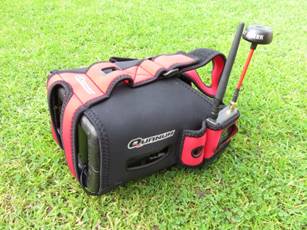 These styles of FPV goggles first appeared on the scene about 3 years ago. They initially used basic black foam boxes with 4 to 5” screens at one end and a basic Fresnel lens to focus. Since then, this area of the market has seen a huge increase in the number of manufactures and vendors. Manufacturers are continually bringing out new versions that include features you’d normally only expect to find in the more expensive compact goggles. Better optics, on-board DVR, and diversity receivers are just some of the more advanced features that are starting to appear. So what’s the attraction? In one word – cost. These goggles are a lot cheaper than the custom goggles from the main manufacturers, often using off the shelf parts with expanded polystyrene enclosures the much larger size means that the cost of trying to fit everything into a small space is avoided.
These styles of FPV goggles first appeared on the scene about 3 years ago. They initially used basic black foam boxes with 4 to 5” screens at one end and a basic Fresnel lens to focus. Since then, this area of the market has seen a huge increase in the number of manufactures and vendors. Manufacturers are continually bringing out new versions that include features you’d normally only expect to find in the more expensive compact goggles. Better optics, on-board DVR, and diversity receivers are just some of the more advanced features that are starting to appear. So what’s the attraction? In one word – cost. These goggles are a lot cheaper than the custom goggles from the main manufacturers, often using off the shelf parts with expanded polystyrene enclosures the much larger size means that the cost of trying to fit everything into a small space is avoided.
Considerations when looking at goggles
So with so many options and styles on the market how do you choose? When I am asked this by new pilots there are a few things that it can help to have a clearer idea about.
Do you really want goggles?
For pilots who wear spectacles for sight correction using goggles can be tricky as the optics in them. Normally they provide only a small amount of focus adjustment. Some of the more expensive goggles do have diopter sets of corrective lenses that you can install but these adjust for a small range of vision problems. Using a screen allows you to wear any corrective spectacles and not worry about trying to fit your spectacles inside the enclosure or being able to buy and use the right strength of corrective lenses. Another consideration is that using a tripod-mounted FPV screen allows others to watch the flight. Another benefit is that you can lift your eyes and visually acquire and follow the model if needed during the flight. I find this very useful when flying fixed-wing models, especially for landing. One drawback of these FPV screens is that they don’t do well in bright sunlight. Most come with sun-shades but a bright sunny day will cause most screens to be tricky to see clearly. I use them in cold conditions where some goggles will fog up unless they feature a demisting fan.
FOV and aspect ratio
One thing that can be useful to know is the aspect ratio and field of view (FOV). Last month we talked about the fact that cameras can be ‘widescreen’ showing a 16:9 aspect ratio or a more traditional 4:3 ratio. Make sure that the camera and goggles have the same so that the image appears in the best way. The field of view is a very personal choice and not normally configurable in the goggles themselves. Think of it like how far you have sat away from the TV – sitting close to it will provide a large image in your view and sitting farther away will make the TV appear smaller. Same thing here. In my experience, any good image that is easy to focus on will become immersive quickly. Too large a field of view (>46 degrees) for me starts to feel like I’m sat too near the screen at the cinema. Around the 30-40 degree levels of FPV feel natural to me, immersive and I don’t have to move my eyes too much to see the edges easily.
Features you want
As we’ve already mentioned there is more and more technology being crammed into these goggles now, here are a few of the ones to consider when buying:
Onboard DVR
This gives you the ability to record your flight into the mini-SD card plugged into the goggles. Usually, the quality isn’t fantastic but it’s fun to watch your flights back and very handy to playback the video to help you find a lost model.
3D Support
Some goggles that use one screen for each eye also support the use of two different images, one shown to each eye. By using a special camera to capture these two images you can have a 3D effect while flying FPV.
Head tracker
This is a small gyro and accelerometer, similar to what is inside most multitotors and flight controllers but this time monitoring the movement of your head. This allows you to control a gimbal under your FPV camera on the model, and by connecting the goggles to your radio using a trainer cable, allowing you to ‘look around’ and move the camera on the model instinctively.
Diversity
This uses more than one antenna and usually more than one FPV receiver to give the pilot the best chance of maintaining a connection with the model. There are lots of ways this is implemented and not all diversity solutions are created equal. Typically a pilot will use a polarized circular antenna and a longer range antenna like a patch or helical to support the model at longer ranges.
IPD adjustment
With those goggles that use two screens, this allows you to adjust the distance between those two sets of optics to help you focus. Not everyone’s eyes are the same distance apart and tying to look through a lens that isn’t directly in front of your eyes isn’t great.
Corrective lenses
Most lens setups in goggles make it feel that you are watching a large screen TV in a darkened room about 6 feet away. For those pilots who need spectacles for those kinds of distances some of the main vendors offer corrective insets in their goggles. For spectacles with stronger prescriptions, I’d recommend using an FPV screen rather than goggles.
‘HD’ Screens
Be careful here –some of the models that we will look at shortly do use 720p screens to show the FPV image but in some cases, it just means that the resolution of the little screens used to show the image to you is higher than normal (most FPV signals are only 640 x 480 pixels in size).
HDMI connectivity
With the above in mind, you can watch video delivered to the goggles via the HDMI port. Typically this isn’t shown in full HD but use handy to fly FPV simulators on your PC.
Modular via ‘bays’
Many of the smaller goggles have managed to make room for a couple of modular bays designed to hold the FPV receiver and items like the head tracker. This allows pilots to add the FPV receiver of their choice and set up the goggles in a way that is perfect for them.
16:9 ‘Widescreen’ support
Initially, all of the cameras and panels used in the goggles were 4:3 ratio. Many goggles are now supporting 16:9 ‘widescreen’. If you’re a pilot that learned to fly 4:3 you’ll find a 16:9 image unusual but for us here, we always fly widescreen (with a 16:9 camera) when we can.
Our current picks when asked...
For the new pilot who wants to try FPV
 Recent products like the Quanum Cyclops are a great example of lower-cost FPV goggles built with the new pilot in mind. No room for upgrades, just what you need to get flying with a good lens, nice screen, and sensitive FPV receiver. None of the frills like diversity, DVR support, external ports here but perfect for the pilot who wants to try FPV without breaking the bank. Goggles like the Quanum Cyclops are less than £45 (plus shipping) and all you need extra is a decent antenna. Other vendors are in on the act too, so we have lots of choice now with some goggles providing larger screens. Looking into them is more like being in the movies and less like watching TV at home. This part of the market will continue to be very active with vendors constantly upgrading the goggles as they compete with each other and can keep down the price while adding some of those extra features.
Recent products like the Quanum Cyclops are a great example of lower-cost FPV goggles built with the new pilot in mind. No room for upgrades, just what you need to get flying with a good lens, nice screen, and sensitive FPV receiver. None of the frills like diversity, DVR support, external ports here but perfect for the pilot who wants to try FPV without breaking the bank. Goggles like the Quanum Cyclops are less than £45 (plus shipping) and all you need extra is a decent antenna. Other vendors are in on the act too, so we have lots of choice now with some goggles providing larger screens. Looking into them is more like being in the movies and less like watching TV at home. This part of the market will continue to be very active with vendors constantly upgrading the goggles as they compete with each other and can keep down the price while adding some of those extra features.
Some of the benefits of these goggles
They are not expensive and very easy to use for new pilots. Many are designed to have the minimum controls to avoid complexity and cost. No need to run wires or get a battery as most of this class of goggle comes with everything you need in the box (apart from a decent antenna!)
Some of the downsides
There is limited flexibility and upgradability here due to their target customers. If you want more bells and whistles then you need to look elsewhere. The other downside is that the speed of products released means that whatever you end up buying will be replaced with a better version in 3-6 months.
For the more demanding Pilot who wants more features
 Goggles like the HeadPlay uses a huge 7” screen that provides a stunning view of the FPV image but is so large that some feel like they are sitting to close to an IMAX screen and detail at the edges (for things like on-screen displays) cannot be seen without moving the point of interest significantly. More common are the slightly smaller panels that support HD video. These goggles allow us to play videos and run any input that can be displayed in 720p. FPV simulators and PC games can be played through this class of goggles making them useful for lots of applications, not just traditional FPV. With the higher prices asked for these goggles, the vendors are also starting to put more of the options in them that we’d expect to find on the high-end goggles we started looking at the beginning of the article. One of the recent releases was the Quanum Genesis. One of the latest breed of this class of goggle, created with input from one of the leading manufacturers in the sport. In addition to being FPV goggles, they also provide HDMI input, antenna diversity, a brand new lens configuration for less weight and improved view, and a USB port to allow the goggle firmware to be updated. Goggles like the Quanum Genesis cost around £150 (plus shipping) and just need the antennas adding – the ship with simple dipole antennas but they are not great for FPV.
Goggles like the HeadPlay uses a huge 7” screen that provides a stunning view of the FPV image but is so large that some feel like they are sitting to close to an IMAX screen and detail at the edges (for things like on-screen displays) cannot be seen without moving the point of interest significantly. More common are the slightly smaller panels that support HD video. These goggles allow us to play videos and run any input that can be displayed in 720p. FPV simulators and PC games can be played through this class of goggles making them useful for lots of applications, not just traditional FPV. With the higher prices asked for these goggles, the vendors are also starting to put more of the options in them that we’d expect to find on the high-end goggles we started looking at the beginning of the article. One of the recent releases was the Quanum Genesis. One of the latest breed of this class of goggle, created with input from one of the leading manufacturers in the sport. In addition to being FPV goggles, they also provide HDMI input, antenna diversity, a brand new lens configuration for less weight and improved view, and a USB port to allow the goggle firmware to be updated. Goggles like the Quanum Genesis cost around £150 (plus shipping) and just need the antennas adding – the ship with simple dipole antennas but they are not great for FPV.
Some of the benefits of these goggles
Manufacturers of these goggles are starting to add some of the features like HDMI and diversity to make these sets far more versatile. The integrated nature of them helps to reduce the complexity of the pilot and still offer all of this for a lower price than traditional goggles.
Some of the downsides
There is limited flexibility and upgradability here as the components are internal and integrated. Some of the elements used like the receivers may not be as good as those in higher priced products and swapping or upgrading them is often not possible.
For the FPV pilot who is ready to invest
For me, it’s got to be a manufacturer like Fat Shark, Boscam, or Skyzone. These goggles are very lightweight, comfortable and have lots of the features listed above inside already and will last you for years. Out of all the goggles we have here it’s the Fat Sharks we pull from the shelf. They fit into the bag easily, perform great, have an on-board DVR, HDMI port, IPD adjustment, and a fan to stop them misting up. In addition, I’ve added an internal head tracker module and a diversity receiver.
Summary
The options for FPV goggles are changing all the time so it pays to look for the latest versions of what you’re interested in and also spot the previous model being sold at a discount. Goggles are like radios for most of the pilots I know. They are a very personal choice and many pilots, myself included, become fans of one brand and like to stick with that brand as we progress in the hobby. This does mean you'll find many opinions, from commentators on the online forums and videos, when doing your research. This is where borrowing a set or two from fellow pilots on the field can help you get an idea of what is important to you. I hope we see more model shops and vendors at shows offering to let customers try each of the goggles they sell to allow you to make an informed choice about what works for you and feels the most natural. This is one area where the local hobby shop can be invaluable! One final thought. If you start with a cheaper set of goggles they will not go to waste when you upgrade. They can be loaned to friends and onlookers at the field so they can enjoy the FPV flight too! Happy flying!
Hear it First: Join our Mailing List
Sign up to receive new product updates, exclusive discounts, news, and more!

